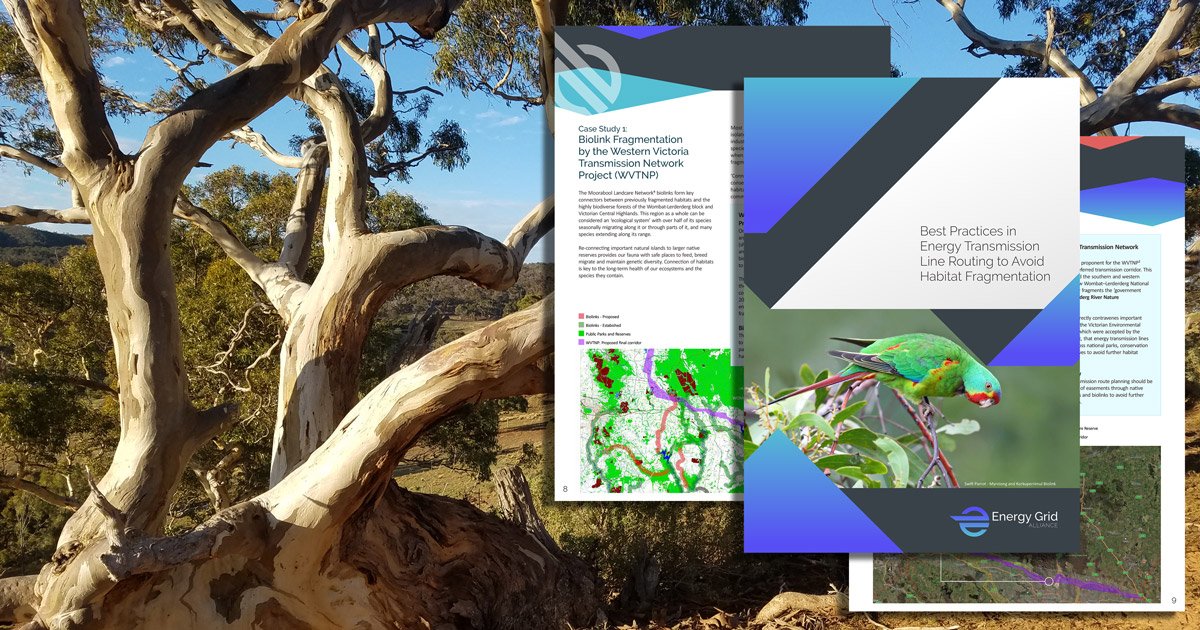Best Practices in Energy Transmission Line Routing to Avoid Habitat Fragmentation

Avoid construction of easements through native parks, nature reserves and biolinks to avoid further habitat fragmentation.
There is nothing more important to our existence than a healthy natural environment. Yet despite efforts in recent decades, many native plant and animal species remain under threat as Victoria’s biodiversity continues to decline. We need to stop the decline of our biodiversity and ensure that our natural environment is healthy, valued and actively cared for.
The decline of our biodiversity also impacts the future health, wellbeing and prosperity of all Victorian communities.
The purpose of the document is to:
- Provide an overview of the vital need to protect Victoria’s biodiversity
- Highlight the importance of community and landholder initiatives such as land for conservation
- Identify how creation of biolinks (wildlife corridors) can halt further habitat fragmentation and improve the long-term health of our ecosystems and the species they contain.
This document also presents case studies relating to the proposed energy infrastructure project, the Western Victoria Transmission Network Project (WVTNP). The proposed final corridor of this project will have a disturbing and irreversible impact on the important work of government funded conservation groups and directly contravenes the Victorian Government Biodiversity 2037 plan, the purpose of which is to preserve and enhance biodiversity and avoid further loss through habitat fragmentation.
These case studies highlight an urgent need for energy network operators and related stakeholders to adopt and enforce policies that serve to protect and enhance our environment and prevent further decline of our biodiversity.
“We need to work together and enjoy the benefits of our natural environment, recognising that our long term wellbeing and prosperity is inextricably linked to the health of our natural environment. This is not just a plan for action, but a blueprint for our success in stopping the decline of Victoria’s unique biodiversity.”

